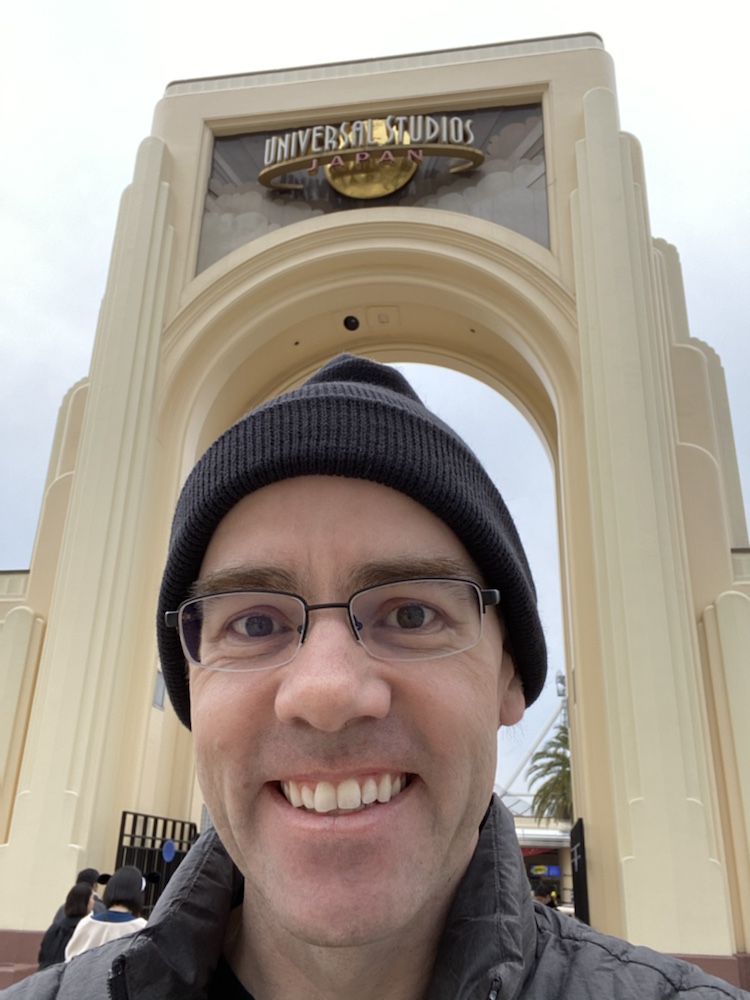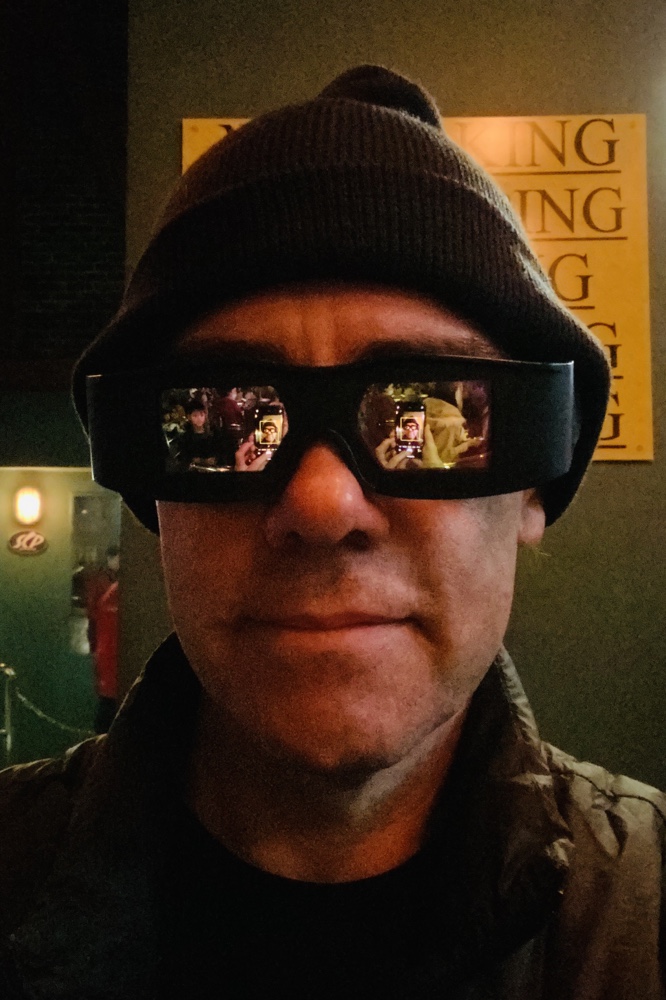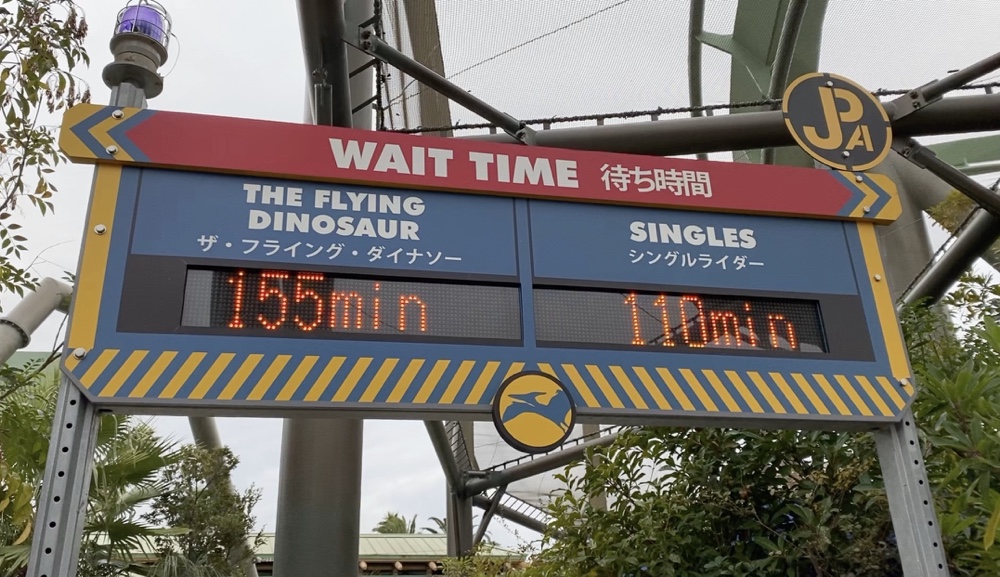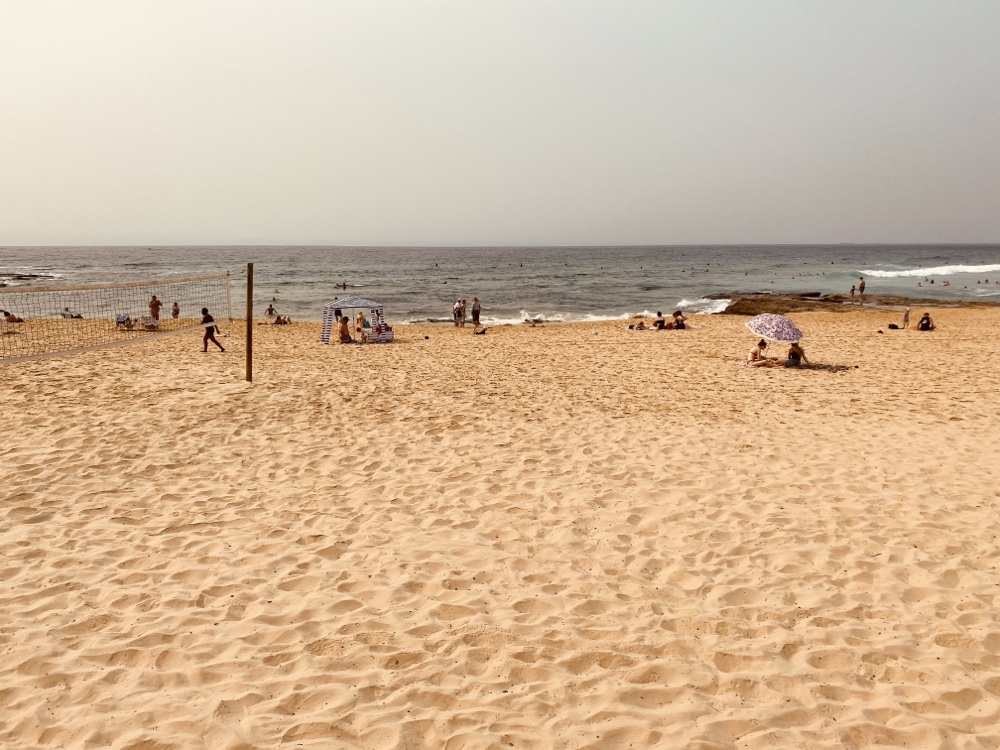Today I went to Universal Studios Japan! Apparently I had picked a good day to go since all of Osaka – perhaps even all of Japan – seemed to be there today as well 🙂

I had a very early start this morning (due to slight jetlag) but even though I got to the park 45 minutes before the gates opened the throng of humanity stretched as far as the eye could see. Once I was inside I made a beeline for the Harry Potter section and quickly joined the longest line for a ride I’d ever joined:

Yes the ride is in the castle, and the line is not supposed to stretch out this far. But this morning it did, and the employees scrambled to open up extra line space to accommodate us all. In actuality it wasn’t that long a wait (maybe 20 minutes) and when I rode the ride itself it was just as good as I remembered from Florida last year.

I then methodically went around going on the other available rides (skipping the log flume and the ones that would make me sick) – that’s my wearing the 3D glasses for Spider-Man above – which didn’t take long since there’s not that many and three were closed today! Eventually I joined the line for this:

It’s called The Flying Dinosaur and is apparently an amazing roller coaster. Unfortunately the very strong warnings of motion sickness scared me away and when I mustered courage and returned later I was confronted by this:

By this point the park was inundated with people and almost all the lines were excessive. So in quick succession, I watched the three special effects shows 🙂
Since they are all based on old films – Waterworld, Backdraft and Terminator 2 – each is showing it’s age. And yet I very much enjoyed all three. The vision of the future in Terminator is laughable now but the show mixes video and live action skillfully and the 3D is very good. Backdraft was two very long ‘making of’ movies (narrated entirely in Japanese) followed by an astonishing demonstration of (real) flame effects in movies.
But the real star was Waterworld. It was beyond good: it was amazing.

The arena as you can see was enormous, and the show was basically live action Mad Max with boats. The explosions and effects were ridiculously over the top and I loved it. Probably the highlight of my day!
I would have liked to ride the big coaster and stay for the light show, but early afternoon I was ruined and left the park to return to the hotel for a break. While those that know me are thinking “He rested?!?” I can assure you that a bit later I went back out and did some shopping!

That’s an original Ultraman suit used in a TV series, on display at an official store. I had my Ultraman shirt on and the employee saluted me 🙂
Now – it’s just after 7 – I’m so tired I can barely type, so an early night it will be. I’ll need lots of rest for tomorrow, since I’ve planned an equally full itinerary…






